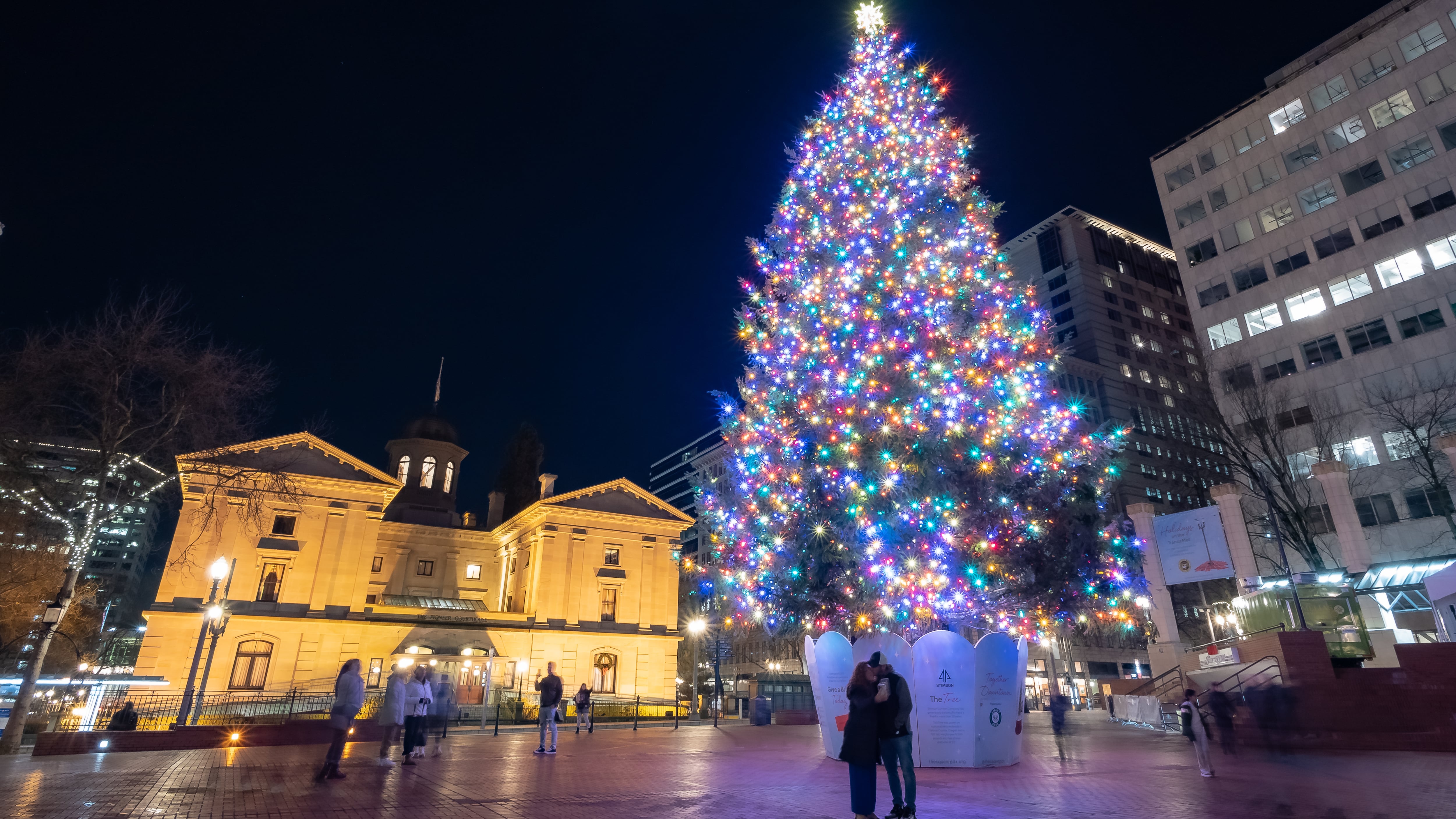Problem: Downtown is a ghost town.
Idea: Create a six-block Carless Square in the heart of Portland.
Urban planners have long said foot traffic is the key ingredient of a healthy, thriving downtown core. Right now, that’s exactly what Portland is missing.
Some downtown blocks, like those along Broadway, have started to attract shoppers again. But turn a corner, and you get a wall of plywood, or an empty parking garage.
“The beauty of any city is the ability to stroll and always be surprised in a good way. Right now, there are huge gaps between things that are open,” says Tad Savinar, a former member of the city’s design review board and a local artist.
Portland runs a real risk of losing its most pivotal neighborhood. So now is the time to remember what made that neighborhood distinctive in the first place: walking.
In the 1970s, as other major cities tried to emulate the suburbs by building parking garages and shopping malls, Portland went the other direction. Then-Mayor Neil Goldschmidt built Pioneer Courthouse Square, and arranged for MAX trains to converge at that central plaza.
“Portland made a profound decision that it would make its downtown for people, not vehicles. We made active uses for ground floors. None of that stuff was there before 1972,” says Ethan Seltzer, emeritus professor at Portland State University’s Toulan School of Urban Studies and Planning. “In a way, we’re back at that stage of seeking a wide range of ways to activate downtown.”
Here’s how to do that: ban car traffic from six square blocks of downtown Portland and make the swath of land into a hub of food, retail and greenspace that draws people to a concentrated part of the city to shop, dine and linger. Think the Portland Farmers Market, but every day of the week.
City Hall has a model for this: Former Commissioner Jo Ann Hardesty founded a pandemic-era program that gave restaurants a lifeline for survival and transformed some city streets into car-free zones. The program, called Healthy Businesses, blocked off streets—Southeast 79th Avenue, Southwest Harvey Milk Street, among others—and allowed restaurants to extend seating onto the asphalt so that restaurants could remain open throughout social distancing mandates.
Imagine that experiment were replicated on a greater scale. In essence, Pioneer Courthouse Square would grow to become a six-block piazza, stretching from the Park Blocks on the west to Chapman and Lownsdale squares on the east. You could stroll from a movie at Fox Tower to dinner at Portland City Grill without once checking for oncoming traffic.
Savinar, who says he’s opposed to a carless square, says changes to downtown’s landscape could be gradual. “You have to take small bites,” he says. “Small, one-block street closures for a festival, and seeing if you can draw a little circle a little further out from those places.”
One might look to Pearl Street Mall in Boulder, Colo., as an example of a carless outdoor promenade. The cobbled streets are lined with brunch spots with outdoor seating, bars, trinket shops and boutiques, musicians trying to make a buck, and performers on stilts juggling flaming objects. A similar walking mall exists in Charlottesville, Va., lined by bookstores and theaters. Boston has such a destination market; Seattle and San Francisco lure tourists with their fishing wharves.
Portland could outdo all of them. It does not need a signature attraction to lure people back downtown. It only needs to give them a space to gather.

